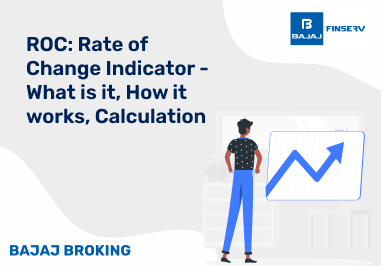If you are familiar with the stock market, you probably know how studying price charts of stocks is an integral part of technical analysis. This helps in choosing a stock for trade or investment. And when you study charts you will come across patterns that often repeat themselves across charts. Knowing how to interpret these common patterns helps save time during analysis.
In this article, we will discuss two such patterns that indicate price reversals. The ‘double top’ pattern indicates a bearish reversal, and the ‘double bottom’ pattern indicates a bullish reversal. Let’s dig deeper into these patterns and explore how they work.
What is a Double Top Pattern?
This pattern is bearish in nature and it forms following an uptrend in the chart. The shape of the pattern will resemble the letter ‘M.’ This pattern draws itself when a stock reaches a certain high point twice, and between the two peaks, faces a moderate decline. Double top pattern signals a downward trend when confirmed.
What is a Double Bottom Pattern?
This pattern is bullish in nature and it forms following a downtrend in the chart. The shape of the pattern will resemble the letter ‘W.’ This pattern draws itself when a stock reaches a certain low point twice, and between the two roughs, faces a moderate rise. Double bottom pattern signals an upward trend when confirmed.
How do traders use these patterns?
Identifying Reversals:
A double top pattern indicates that an uptrend is about to get reversed and a double bottom pattern indicates that a downward trend is about to get reversed. Traders use these patterns to anticipate and recognise these reversals so that they can be better prepared to make decisions accordingly.
Setting Entry and Exit Points:
An entry point is usually set based on the neckline - which is the line connecting the two peaks or troughs. For a double top pattern, the entry point for a short position is set below the neckline. And in the case of a double bottom pattern, the recommended approach is to go long above the neckline.
Risk Management:
The other reason has to be how patterns aid in setting the stop-loss orders. For a double top, just place the stop-loss slightly above the second peak; for a double bottom, the opposite will apply. This strategy will minimise potential losses if the market suddenly turns in the opposite direction.
How to Interpret the Double Top and Double Bottom Patterns
The key features to look out for in order to read such patterns correctly are the peaks, troughs, and neckline.
Now, notice two distinct peaks, each peak similar in height to the other. They should be divided by a modest pullback when forming a double top. The pattern is deemed to be completed as soon as the price collapses below the neckline, which reinforces the bearish reversal. If it is a double bottom, then two roughly equal lows can be searched with an advance in between. A penetration above the neckline establishes a bullish reversal.
Another factor is the volume therein: the higher the volume at pattern formation, the more reliable the pattern and the stronger is the tendency reversal.
Limitations of the Double Tops and Bottoms Pattern
Double top and double bottom patterns are also susceptible to false breakouts, possibly bringing about premature entry into the position. It is believed to occur when prices temporarily break through the neckline and then begin to weaken before pulling back into the dominant trend.
These chart patterns might take some time to develop, providing late buy and sell signals. During this waiting period, the trader could be missing out on other good opportunities. To avoid such limitations, traders often use these patterns in combination with other technical analysis tools for confirmation.
Conclusion
The double top and double bottom patterns are two powerful tools for the trader in order to accurately predict the possible stock reversals. While these patterns themselves are not perfect, an in-depth understanding of how to read, interpret, and use them will significantly enhance trading decisions. These patterns can be put to work with other techniques of technical analysis to minimise losses while maximising profits.














